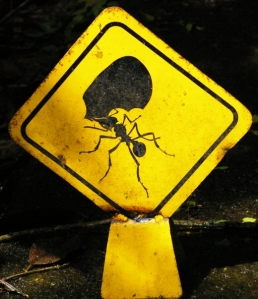When I started Port-to-Port Consulting, my Indianapolis computer support company, I was in the middle of my MBA program. Unlike most of my peers who were focusing in finance or marketing, my emphasis was on organizations: design, development, and evolution. Port-to-Port instantly became my laboratory for organizational design. I was intent on avoiding the military hierarchy that most American corporations follow. In fact, my first model was an ant colony.
You see, every ant in the colony comes from the same mother, their queen. But the queen isn’t in charge of the colony. She has the single job of laying eggs, and she does it constantly. In fact, no one is in charge of an ant colony. Even though all of the ants come from the same queen, they are born with special attributes that fit the job they eventually do. This is called polymorphism. The tunnel diggers have bigger mandibles for digging; the egg handlers are small and delicate; the defenders have larger pinchers; and so on. Each ant just does its job and trusts that each other ant will do the same. However, when there’s a problem, every ant joins in to help out. With no hierarchy at all, ants manage to build incredible colonies and survive in every environment. They constantly adapt, collectively and individually, to the situation at hand. As a result, there are more ants by weight on the planet than any other species.
That was, to me, the ideal way to design a company. Each person would know what his job was, in general. Each person would also know what work needed to be done by the group as a whole. With that information, each person could figure what was the best use of his time right now and we’d grow and be successful.
I lost track of that idea as people came who expected to find the hierarchy that was what they believed companies were supposed to have. I recently have returned to that idea. Perhaps it will be the truly defining difference for Port-to-Port.
